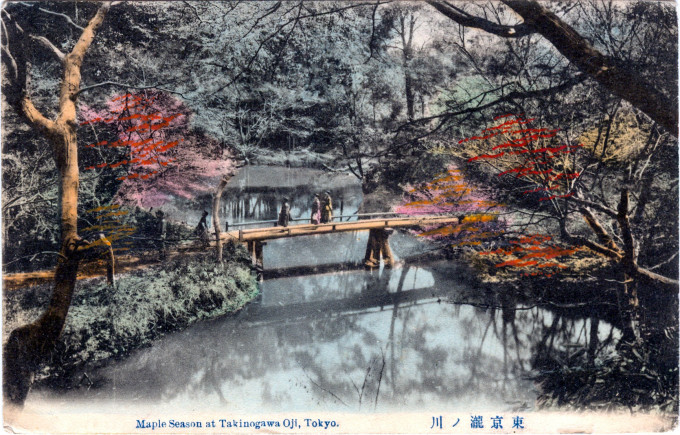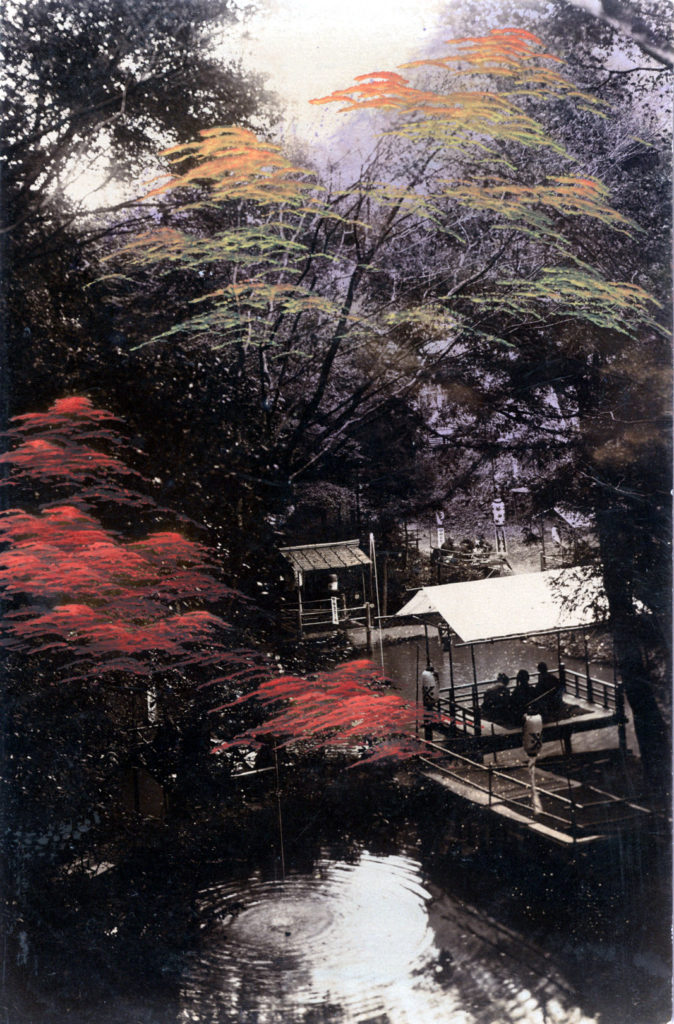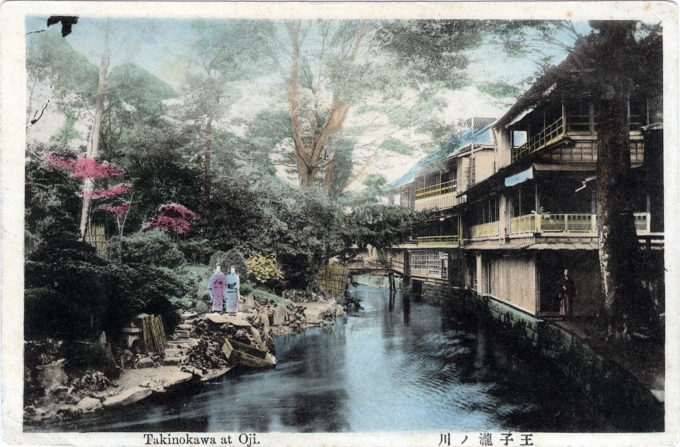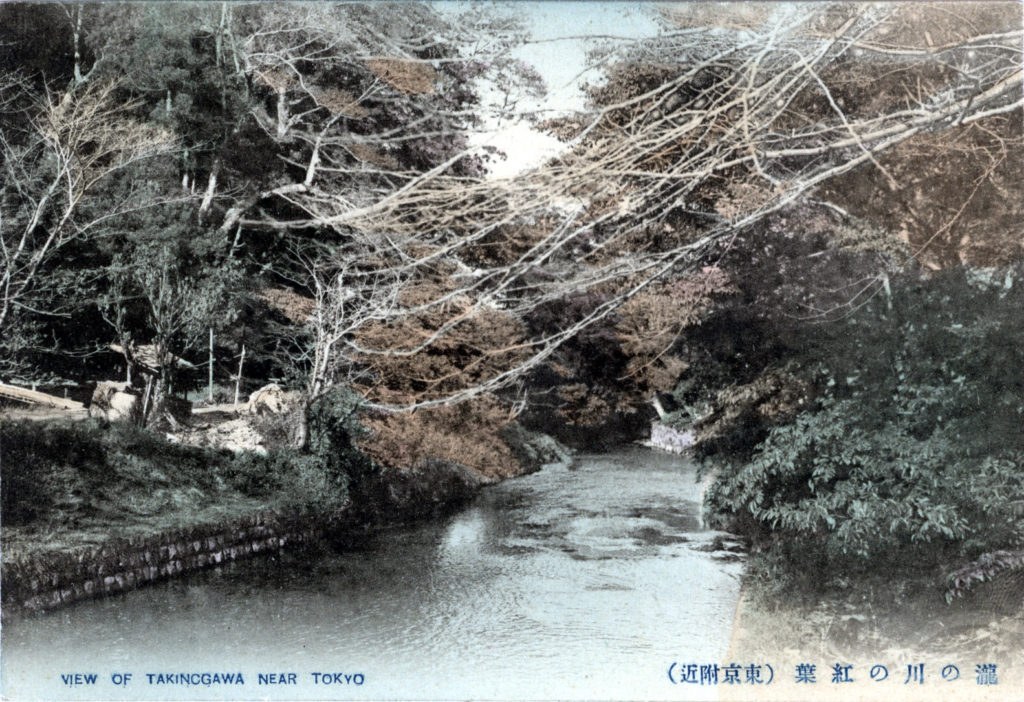“The maple leaves have douned the bright garb of autumn in gardens, fields and mountains, withe the coming of frost. Just now the season is at the highest, and the ‘crimson’ leaves are the most beautiful.
“Many holiday-makers travel daily out of the city jin quest of autumn scenes, and not a few take a day off for picnics to some suburban or out-city favorite spots [known] for the enjoyment of nature and life.
“… Among places within easier reach of the city for the maple sights is a grove in the temple grounds of Kaianji … Takinogawa is another place chosen by many for autumn picnic.
“Alighting from the electric tram at Asukayama or the train at Oji, a visitor will have to walk but a few minutes before he sees the gorgeous foliage of the maples of Kongoji temple, popularly known as ‘The Maple Temple’.
“A stroll along the banks of the Otonashi, which meanders under the scarlet leaves, will convince the visitor that the sights are worth even more than one visit.
“It is said to be the one of the three best sights in the north suburbs of the city.”
– “Maple Viewing Season”, The Japan Times, Saturday, November 8, 1913
“A notice of the floral festivals of the year as observed in Japan demands some mention of the maple – for the reddening leaf of the maple, like the foliage of many other blossomless trees, is regarded as a flower in Japan.
“The rich tints of the changing leaves of certain deciduous trees hardly distinguishable from the colouring of blossoming shrubs, such as the azalea, form a favourite object of attraction during the Autumn months. The native term, momiji, which is commonly translated ‘maple’, is, strictly speaking, a general name applied to many trees which redden in the Fall.
“Of the maple itself, there are many varieties distinguished both by the form of their leaves and the tone of their changing colour. No garden is considered complete without its group of such reddening trees, placed beside some artificial hill towards the West, to receive additional splendour from the setting sun.
“… At Ko-no-dai, a famous prominence commanding a view of the whole plain of Tokio, there are some magnificent maple trees noted for their enormous size … About the end of October, in the glen called Taki-no-gawa at Oji, a suburb of Tokio, the slopes of a natural glen between the hills are planted with thick masses of these trees forming a most romantic spot where from the galleries of a rustic arbour the sight of the foliage in all its burning splendour may be enjoyed. Shinagawa and Meguro, other well known spots in the vicinity of the capital, have also good groups of maples which attract many sight seers. Picnicking and mushroom gathering are pastimes which accompany the viewing of the maple.
“In the poems and pictures of the country, the maple is associated with deer:
How full of sorrow seems the Autumn! when
In solitary rambles slowly straying,
Amid the russet foliage of the glen,
I listen to the lonely stag’s sad baying.”
– The Floral Art of Japan: The Flowers of Japan and the Art of Floral Arrangement, Josiah Conder, 1899
The maple viewers;
Red-faced, every one of them!
– Anonymous waka poem





